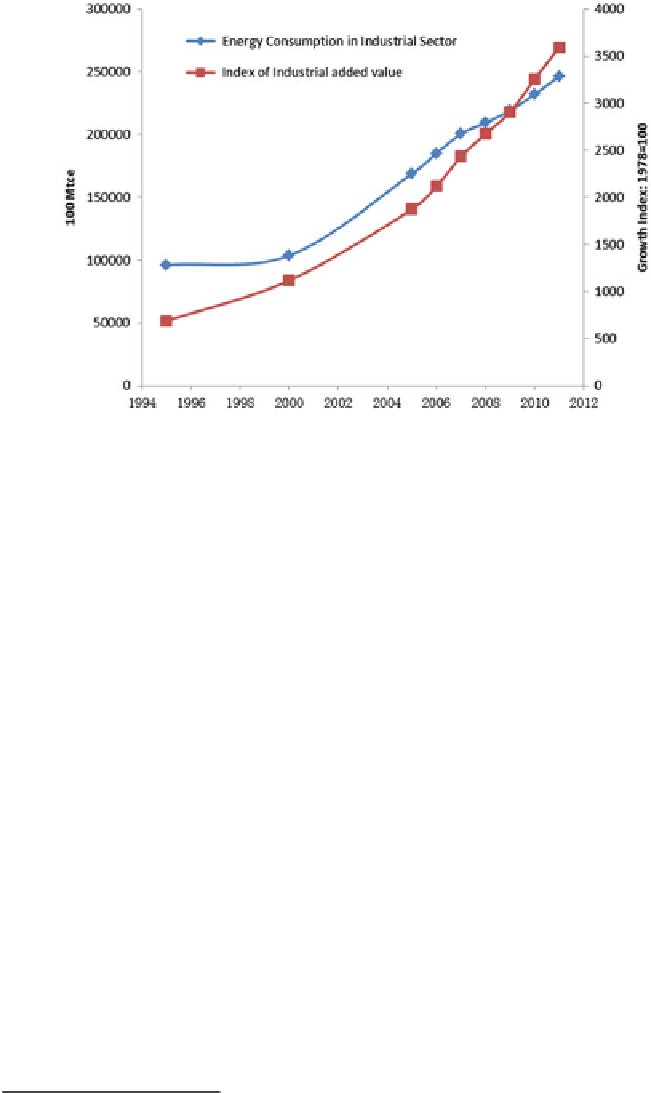Environmental Engineering Reference
In-Depth Information
Fig. 3.1
Energy consumption and industrial added-value in industrial sector (1995-2011)
(Source: China Energy Statistics Yearbook [
2
])
that during the 11th Five-Year Plan period, energy consumption of China's above-
scale industrial added-value decreased by 26.1 % and the total energy saved
amounted to 0.63 billion tons of coal equivalent.
2
In the 11th Five-Year Plan,
China's energy consumption per GDP unit dropped by 19.1 %. It therefore can be
concluded that industrial energy saving has played a significant role in achieving
the energy saving goal of the 11th Five-Year Plan period. The energy saving effects
of the industrial sector can be identified from the following aspects:
3.1.1.1 The Continuing Decrease in Energy Consumption of High
Energy-Consumption Industry Per Unit Product Largely
Contributed to Energy Saving in the Industrial Sector
In the industrial sector, energy consumption of the top six energy-intensive industries
(including steel, petrochemicals, chemical, building material, nonferrous metals,
electric power and heating) accounted for 70 % of China's total national industrial
energy consumption, and above 50 % of the national total (See Table
3.1
). Therefore,
the energy saving and emissions reductions of the main energy-intensive industrial
sector determines the energy saving results of the industrial sector as a whole.
During the period of the 11th Five-Year Plan, the single product energy consumption
of the main high energy-consumption products decreased to a greater extent than at any
time in history (See Fig.
3.2
). The comprehensive energy consumption of copper
refining and caustic soda production decreased by 35 %, while that of the cement and
2
Data courtesy of Ministry of Industry and Information Technology, Planning on Energy-saving
of Industrial Sector during the period of 12th FYP.

